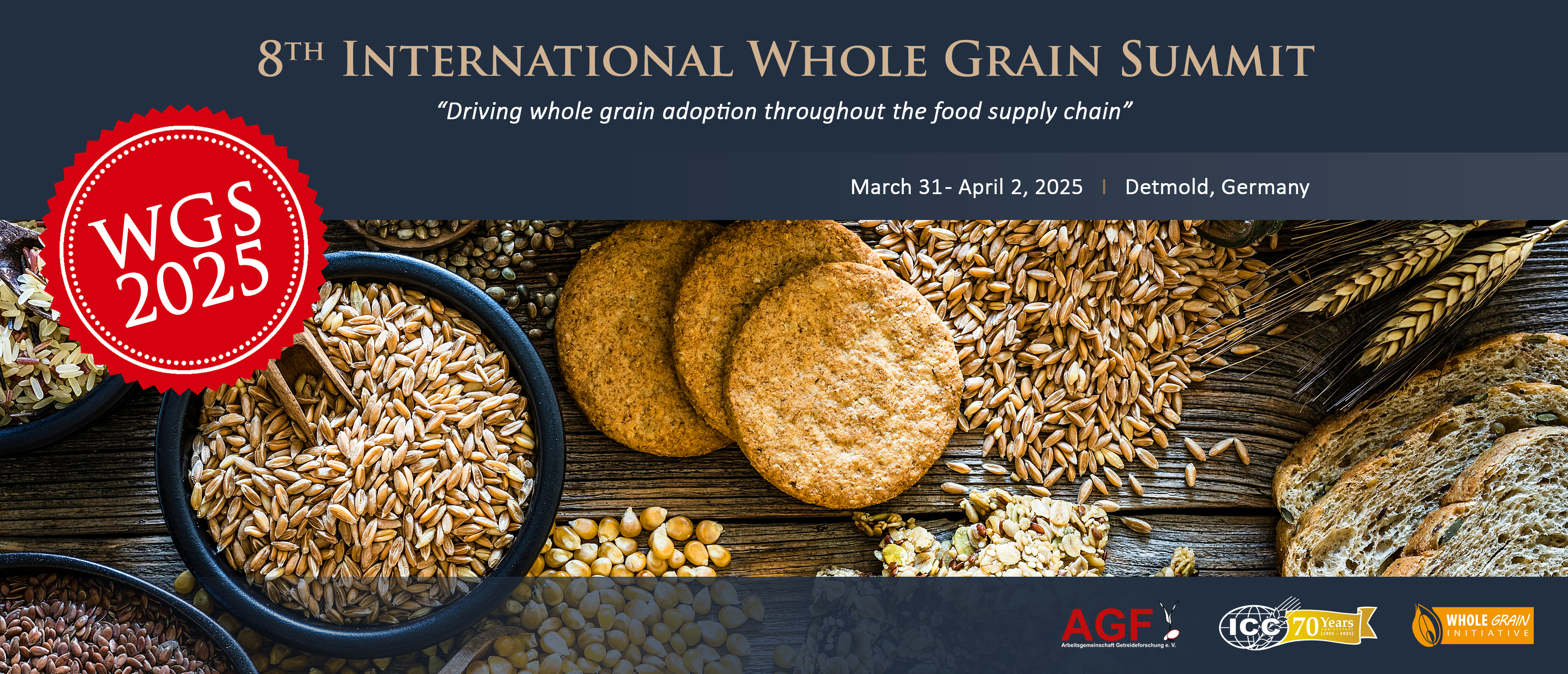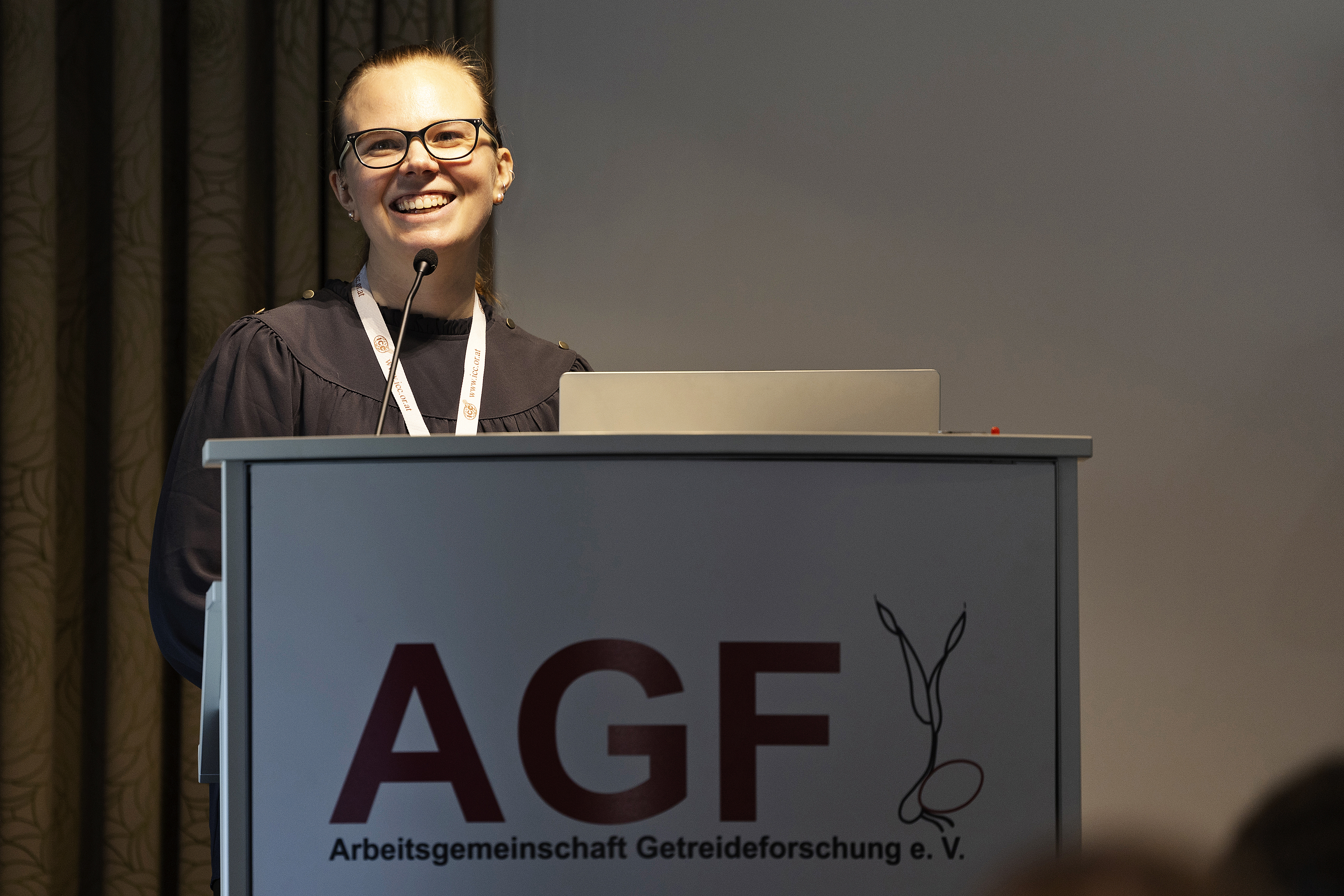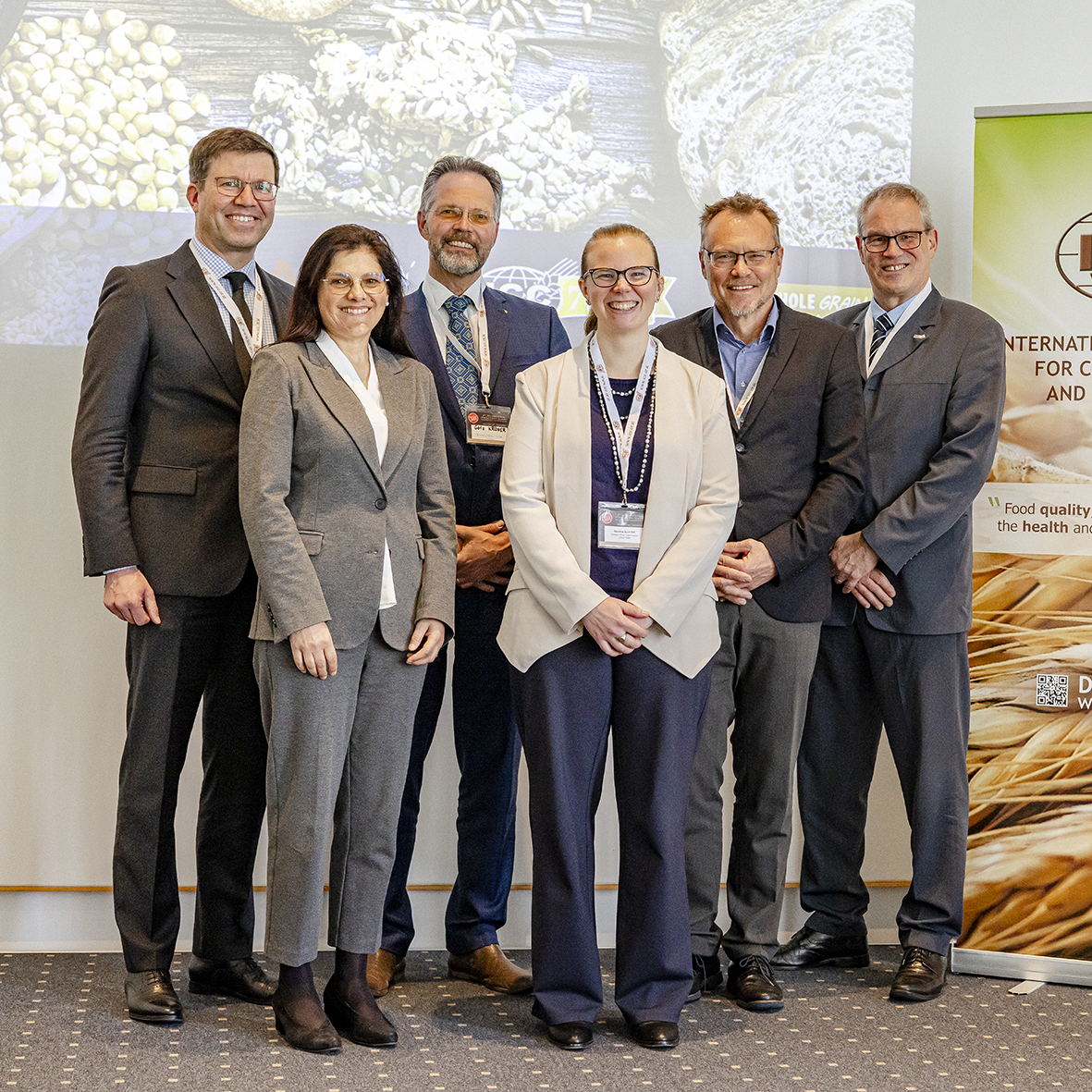Share This
This past spring, our team had the opportunity to join whole grain experts from around the world at the International Whole Grain Summit in Detmold, Germany where we spent three days presenting, discussing, and collaborating with scientists, food manufacturers, public health advocates, and policy makers, around questions of how we might “drive whole grain adoption throughout the food supply chain.”
Unlike your typical scientific conference, this event was largely discussion based and all the participants engaged in a highly interactive series of Deep Thematic World Café-style discussions and workshops aimed at action planning. Prepared questions at fifteen different roundtables were used to start lively conversations about the most effective ways to translate science into application, always keeping focus on the end goal of increasing global whole grain intake. Through collaboration and intense brainstorming with participants from all different sectors, nations, and perspectives, the conclusions and takeaways from all the tables were gradually developed over the course of many hours, with participants rotating from topic to topic. The quality of the results and the moments of clarity and insight offered by these discussions were both impressive and satisfying and our team walked away with great ideas about new areas of focus to keep pushing for increased whole grain intake in the work we do.
Here are the top ten takeaways that came out of the roundtable discussions at the event. These will be used as the framework for driving the international Whole Grain Initiative’s work over the next several years and the Whole Grains Council looks forward to being directly involved in a lot of this work.
-
Processing as a tool for health and whole grain acceptance
Processing isn’t the enemy – it is essential for safety and food security. Whole grains require at least minimal processing to be edible, and the substantial body of evidence supporting their health benefits comes from analysis of dietary intake of processed foods such as whole-grain breads and breakfast cereals. We know these foods offer health benefits that go beyond their refined grain counterparts. Processing can enhance nutritional value, improve sensory properties, and ensure safety of whole grains. We need to foster more positive, science-based messaging around processing to build trust and understanding among consumers. This may include highlighting different forms of processing and how it delivers healthy whole-grain products to consumers. -
Affordability and economic incentives are critical
Whole grain affordability remains a key barrier, perhaps largely due to the absence of economies of scale in whole grain milling. Solutions include subsidies, cost-parity initiatives, and economic value-chain analysis. Fiscal tools like tax reductions, and government incentives should be explored to close the price gap between whole and refined grain products. -
Leveraging a “health by stealth” approach
Gradual reformulation strategies that retain familiar taste and texture are often more acceptable to consumers. Even small, incremental increases in whole grain intake – especially among those with the lowest levels of consumption – can deliver significant health benefits. Every gram counts. To succeed, these “stealth health” approaches should be informed by segmented consumer research and cultural context and supported by parallel education and myth-busting campaigns. A database/toolkit of available technical solutions (ingredients & processes) with pros and cons organized by product category will support private sector reformulation efforts. -
Lead with taste: strategic communication campaigns
Messaging should lead with taste, fun, and ease, not just health. Successful campaigns tap into social media, influencers, and chefs, and normalize whole grains as part of modern, enjoyable eating — particularly for children and families. -
Improve labeling and align on WGI definition
Current nutrient profiling systems often use fiber as a proxy for whole grain, which can mislead consumers and obscure the nutritional differences between whole and refined grains. Other classification systems, such as Nova, can confuse consumers and may discourage whole-grain intake by including many common grain foods in a category that consumers are told to avoid. It’s vital to promote alignment with the WGI consensus definition of whole grain as a food ingredient and advocate for better labeling schemes for whole grain foods. A new targeted whole grain intake recommendation can support this process. -
Start early – establish healthy habits in children
To build a “whole-grain generation,” education should start in schools, supported by teachers, caregivers, and food service programs. Examples include school meal programs, which offer a powerful opportunity to normalize whole grain consumption, helping to reduce resistance to dietary changes and, in many cases, prompting children to request whole grain options at home. Fun activities, appealing recipes, and clear institutional meal guidelines can foster early adoption and encourage long-term habits. We need to consider better nutrition education for teachers and health professionals to assist in improving the nutrition literacy of all. WGI can develop a repository of education programs and their evaluations to serve as an information source for our stakeholders. -
Sustainability messaging is an underutilized opportunity
Whole grains can align with planetary health, plant-based diets, and sustainable agriculture, but the message needs stronger narrative development and consumer relevance. Case studies, and climate-focused marketing/communication campaigns should be explored further. -
Collaboration across sectors drives change
Effective change requires strong public-private partnerships involving government, NGOs, industry, media, and researchers. Shared standards, action plans, and cross-sector funding models are essential to increase availability and adoption. Broad stakeholder involvement throughout the food supply chain is critical. -
Policy, regulation, and fiscal tools must evolve
Governments have a key role in incentivizing change through tax breaks, subsidies, and mandated standards. Policy should support reformulation, supply chain investments, and educational mandates, with a focus on system-level impacts. -
A unified, positive narrative is needed
Across all conversations, there’s a call for a cohesive, hopeful narrative that frames whole grains as delicious, modern, accessible, healthy, and sustainable. This story should unify stakeholders and resonate globally, locally, and culturally.
Learn more about the important work being done by the Whole Grain Intiaitive to increase whole grain intake around the globe. (Caroline)
To have our Oldways Whole Grains Council blog posts (and more whole grain bonus content!) delivered to your inbox, sign up for our monthly email newsletter, called Just Ask for Whole Grains.





Comments
Add a Comment